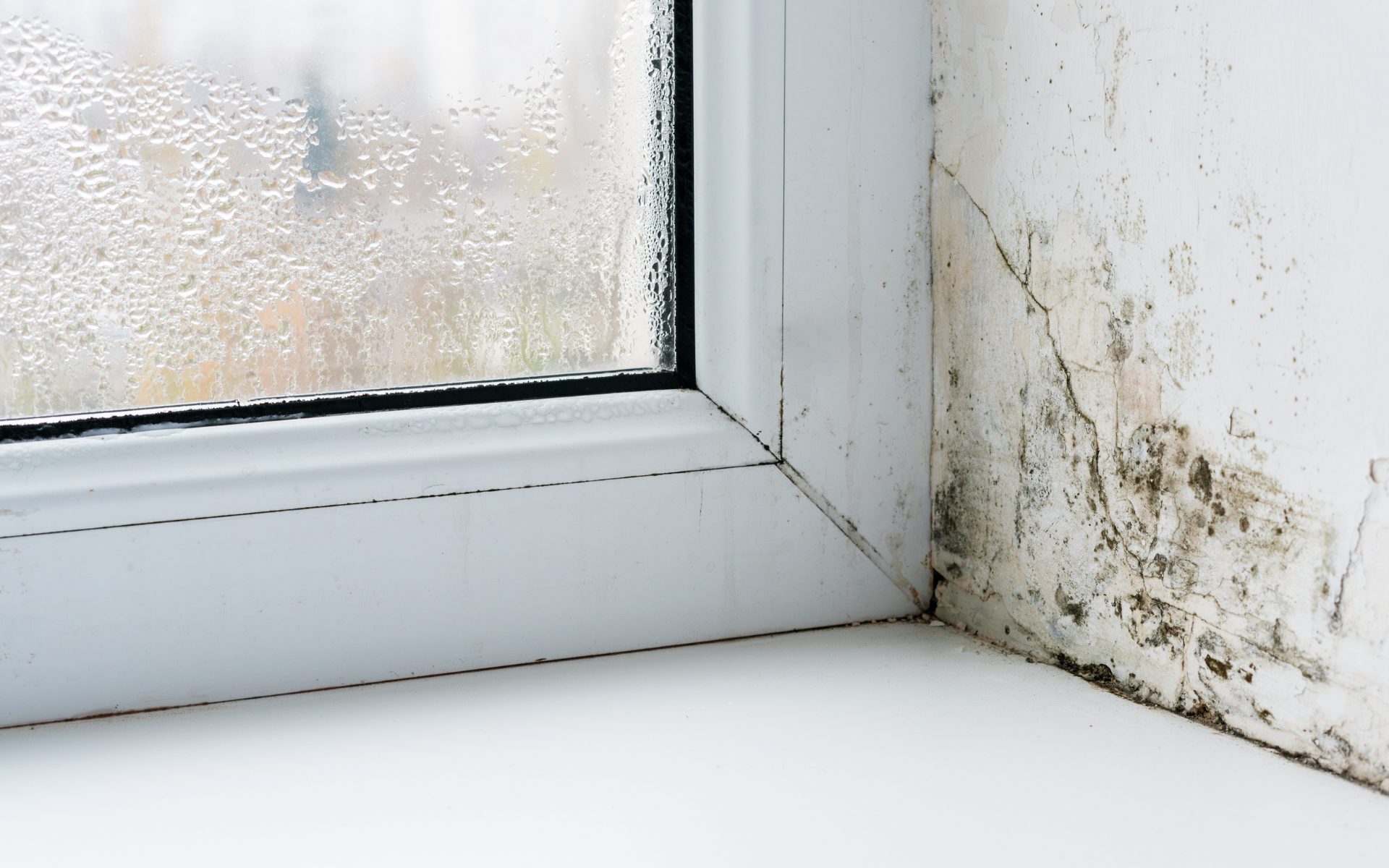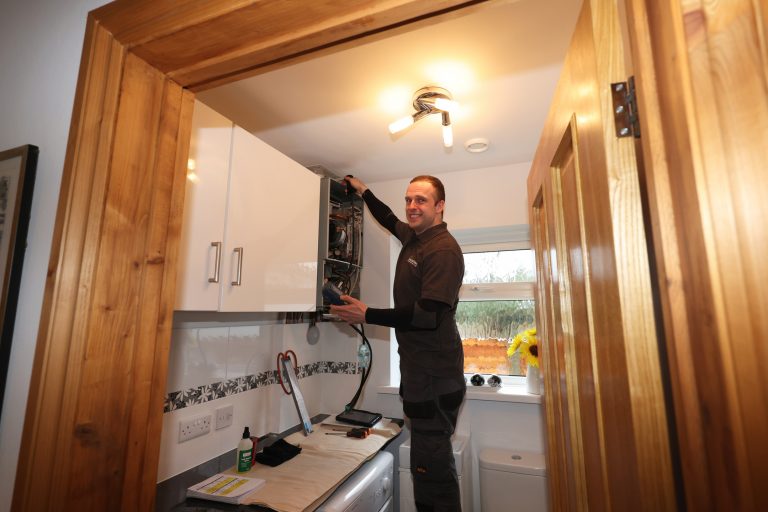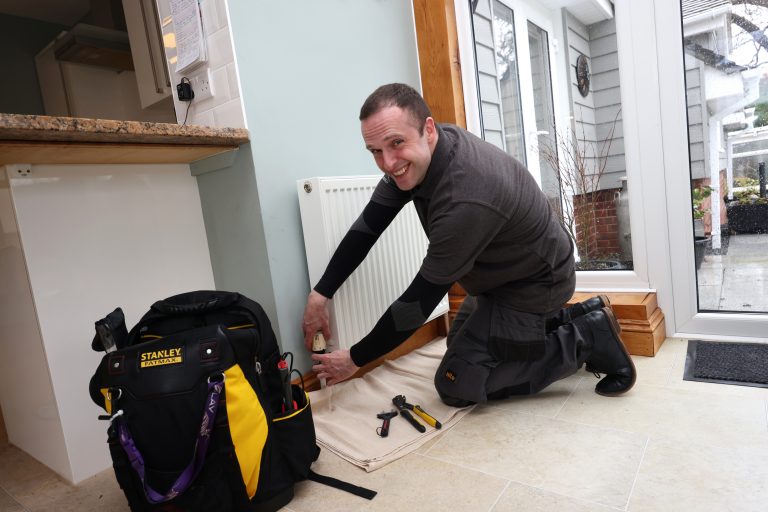What you need to know about damp and condensation
Are you experiencing mould on the walls, ceilings or around your windows? If so, there are ways to prevent it that could save you costly repairs. Here, we explain everything you need to know about damp and how to fend it off.
What causes damp?
There are several reasons why your property could be getting damp:
- Water escaping from a pipe or appliance can cause damp patches to appear. These typically show up close to the source of the leak.
- Missing roof slates blocked guttering, or blocked/damaged drain pipes can lead to rainwater entering your home. Telltale signs include damp patches near the source of the fault.
- A failure in the damp course near the ground floor level of your home is the cause of genuine damp. If you have a damp wall without any apparent signs, or a tidemark is visible, there is a problem with your damp course.
Damp vs condensation
Damp and condensation are two separate things. If you’re seeing water droplets forming on windows, the toilet cistern, or cold walls, this is most likely condensation.
Condensation is caused when air gets too cold to hold the moisture that’s produced by daily activities in the home. When it forms on windows, tiles and mirrors, it cannot do much damage, but cold surfaces or those with little movement of air are vulnerable.
When surfaces are absorbent, the water can soak in, resulting in mould. This can happen on walls, window recesses, furniture, curtains, carpets and even clothes.
What causes condensation?
A number of daily activities can result in condensation if your home is inadequately ventilated or heated. Bathing and showering can add two pints of water to the atmosphere in your home, while drying clothes can add as much as nine pints.
How can condensation be prevented?
There are some simple steps you can take to prevent condensation from occurring in your home:
- Hang washing out to dry wherever possible, or open a window close to the drying washing
- Don’t hang wet washing on radiators
- Put pan lids on when cooking
- When running a bath, add cold water first, followed by hot
- Ventilate your kitchen and bathroom wherever possible, particularly when cooking or showering
- Use cooker hoods and extractor fans if you have them
- Ventilate bedrooms at night by slightly opening a window or trickle vent
Opening a window slightly is often can help to prevent condensation. Opening one window downstairs and another upstairs on the opposite side of the house for 30 minutes a day can make a big difference to the amount of moisture gathering in your home. Alternatively, if you have trickle vents fitted, you can keep these open to allow a small amount of air to circulate.
Trickle vents are small plastic strips positioned at the top of a window or patio doors and can be opened instead of windows if you live on the ground floor of a building and security is a concern. Usually, it would help if you simply slid a catch to open these.
Cold spots
Cold spots can occur when air cannot circulate between the walls and furniture. Ideally, large furniture such as sofas should be positioned against internal walls; if placed against an external wall, a gap of 10cm should be left.
Built-in wardrobes and cupboards should be left with their doors partially open in cold weather to allow air to circulate, helping to prevent mould from forming on the walls onto which the furniture is built and stop mildew from forming on clothes.
Temperature of your home
Homes that are only heated in the morning or evening, or in which one room is heated while the others are left unheated, are more prone to condensation than homes that are moderately heated throughout the day. This is because the fabric of the building is allowed to cool down during the day, while moisture-producing activities are concentrated in short periods.
Leaving the heating on all day at a temperature of 15 to 18 degrees is more effective at preventing condensation than turning it off overnight or when you’re not home. Older houses, in particular, benefit from this.
With the price of gas and electricity so high, it’s tempting to turn the heating off altogether and huddle up under duvets. However, those who can afford to heat their homes more often should do so to avoid the damage caused by condensation. Ultimately, it is less costly to have the heating on than to pay for extensive repairs or redecoration.
Using dehumidifiers
If you need to have the heating off a little more to save on costs, consider investing in a dehumidifier. These draw the water from the air and condense it. The water can then be emptied outside. You can pop them on after a shower or while cooking or drying clothes to help prevent excess moisture from getting into the air.
How to remove condensation and mould
The ideal approach to condensation is to take steps to ensure it doesn’t form in the first place. However, where condensation and mould form, you can take steps to remove it:
- Dry windows and window sills each morning with a cloth, then wring the cloth out rather than putting it on a radiator.
- Wipe walls and window frames to remove mould, and spray with a fungicidal spray which can be bought from the supermarket. Do make sure you follow the instructions for safe use.
- Dry-clean mildewed clothes.
- Shampoo carpets that have succumbed to mould.
Don’t brush or vacuum mouldy surfaces, as this can spread the spores and cause further problems.
Ultimately, the only way to get rid of damp and mould for good is to take steps to prevent it from forming. So if you have further questions about condensation or think you may have a leak that needs fixing, get in touch with us at Aura Heating today.






